Related Research Articles
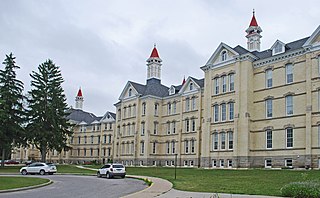
Psychiatric hospitals, also known as mental health hospitals, and mental health units, are hospitals or wards specializing in the treatment of serious mental disorders, such as major depressive disorder, schizophrenia and bipolar disorder. Psychiatric hospitals vary widely in their size and grading. Some hospitals may specialize only in short term or outpatient therapy for low-risk patients. Others may specialize in the temporary or permanent care of residents who, as a result of a psychological disorder, require routine assistance, treatment, or a specialized and controlled environment. Patients are often admitted on a voluntary basis, but people whom psychiatrists believe may pose a significant danger to themselves or others may be subject to involuntary commitment. Psychiatric hospitals may also be referred to as psychiatric wards or units when they are a subunit of a regular hospital.

The Institute of Mental Health has a long tradition of care for psychiatric patients. In 2006, the Institute of Mental Health compound was marked as Singapore's 83rd historic site by the National Heritage Board due to its history as Singapore's first mental institution. As such, the IMH is sometimes referred to as "Woodbridge" by locals.

The Kirkbride Plan was a system of mental asylum design advocated by Philadelphia psychiatrist Thomas Story Kirkbride (1809–1883) in the mid-19th century. The asylums built in the Kirkbride design, often referred to as Kirkbride Buildings, were constructed during the mid-to-late-19th century in the United States. The structural features of the hospitals as designated by Dr. Kirkbride were contingent on his theories regarding the healing of the mentally ill, in which environment and exposure to natural light and air circulation were crucial. The hospitals built according to the Kirkbride Plan would adopt various architectural styles, but had in common the "bat wing" style floor plan, housing numerous wings that sprawl outward from the center.

Barnwood House Hospital was a private mental hospital in Barnwood, Gloucester, England. It was founded by the Gloucester Asylum Trust in 1860 as Barnwood House Institution and later became known as Barnwood House Hospital. The hospital catered for well-to-do patients, with reduced terms for those in financial difficulties. It was popular with the military and clergy, and once counted an Archbishop amongst its patients. During the late nineteenth century Barnwood House flourished under superintendent Frederick Needham, making a healthy profit and receiving praise from the Commissioners in Lunacy. Even the sewerage system was held up as a model of good asylum practice. After the First World War service patients, including war poet and composer Ivor Gurney, were treated with a regime of psychotherapy and recreations such as cricket.

Thomas Story Kirkbride was a physician, advocate for the mentally ill, and founder of the Association of Medical Superintendents of American Institutions for the Insane (AMSAII), a precursor to the American Psychiatric Association.
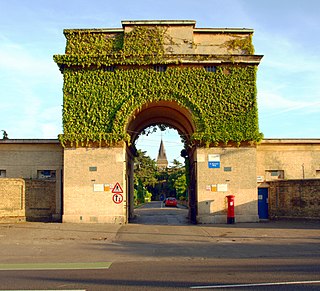
St Bernard's Hospital, also known as Hanwell Insane Asylum and the Hanwell Pauper and Lunatic Asylum, was built for the pauper insane, opening as the First Middlesex County Asylum in 1831. Some of the original buildings are now part of the headquarters for the West London Mental Health NHS Trust (WLMHT).
The Association of Medical Superintendents of American Institutions for the Insane, also known as The Superintendents' Association, was organized in Philadelphia in October, 1844 at a meeting of 13 superintendents, making it the first professional medical specialty organization in the U.S.
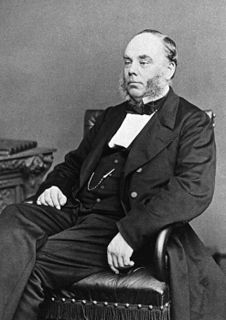
Robert Gardiner Hill MD was a British surgeon specialising in the treatment of lunacy. He is normally credited with being the first superintendent of a small asylum to develop a mode of treatment in which reliance on mechanical medical restraint and coercion could be dropped altogether. In practice he reached this situation in 1838.

Kew Lunatic Asylum is a decommissioned psychiatric hospital located between Princess Street and Yarra Boulevard in Kew, a suburb of Melbourne, Australia. Operational from 1871 to 1988, Kew was one of the largest asylums ever built in Australia. Later known as Willsmere, the complex of buildings were constructed between 1864 and 1872 to the design of architects G.W. Vivian and Frederick Kawerau of the Victorian Public Works Office to house the growing number of "lunatics", "inebriates", and "idiots" in the Colony of Victoria.
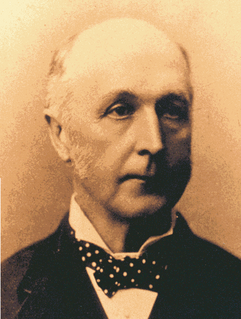
Frederick Norton Manning, was a medical practitioner, military surgeon, Inspector General of the Insane for the Colony of New South Wales, and was an Australian Lunatic Asylum Superintendent. He was a leading figure in the establishment of a number of lunatic asylums in the colonies of New South Wales and Victoria, and participated in inquests and reviews of asylums throughout the colonies.
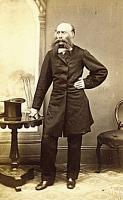
Thomas Embling was a doctor from the United Kingdom who took an interest in the humane treatment of inmates in asylums before emigrating to Melbourne, Australia where he set about reforming the Yarra Bend Asylum. Later on Thomas Embling took up the cause of the gold miners in Eureka and had a successful career in the early parliament of Victoria.

Sir John Batty Tuke PRCPE FRSE LLD was one of the most influential psychiatrists in Scotland in the late nineteenth century, and a Unionist Member of Parliament (MP) from 1900 to 1910. Tuke's career in Edinburgh from 1863 to 1910 spanned a period of significant social and political changes in asylum governance and care in Scotland. Tuke's professional success in public and private practice and his powerful role in several prominent medical societies allowed him to influence his colleagues toward a more physiological understanding of mental illness and its treatment.

The rise of the lunatic asylum and its gradual transformation into, and eventual replacement by, the modern psychiatric hospital, explains the rise of organised, institutional psychiatry. While there were earlier institutions that housed the "insane", the conclusion that institutionalisation was the correct solution to treating people considered to be "mad" was part of a social process in the 19th century that began to seek solutions for outside families and local communities.

Sir John Charles Bucknill was an English psychiatrist and mental health reformer. He was the father of judge Sir Thomas Townsend Bucknill QC MP.

St. Brendan's Hospital was a psychiatric facility located in the north Dublin suburb of Grangegorman. It formed part of the mental health services of Dublin North East with its catchment area being North West Dublin. It is now the site of a modern mental health facility known as the "Phoenix Care Centre". Since the official opening of the Richmond Lunatic Asylum in 1815 the Grangegorman site has continuously provided institutional facilities for the reception of the mentally ill until the present day. As such the Phoenix Care Centre represents the continuation of the oldest public psychiatric facility in Ireland.
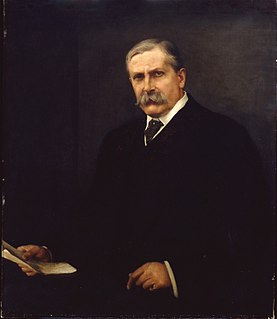
Conolly Norman was an Irish alienist, or psychiatrist, of the late nineteenth and early twentieth centuries. He was the Resident Medical Superintendent of a number of district asylums, most notably Ireland's largest asylum, the Richmond District Lunatic Asylum, now known as St. Brendan's Hospital.
That fellow I was in the Ship with last night, said Buck Mulligan, says you have g.p.i. He's up in Dottyville with Conolly Norman. General Paralysis of the Insane.

Swanbourne Hospital is a heritage listed former mental hospital located in Mount Claremont, Western Australia. Built in 1904, it was the largest stand-alone psychiatric hospital in Western Australia for much of the twentieth century until its closure in September 1972. The hospital was originally known as Claremont Hospital for the Insane, Claremont Mental Hospital and Claremont Hospital. Following the closure of Claremont Hospital in 1972, the original 1904 section of the hospital functioned as the Swanbourne Hospital until 1985. The site has been vacant since 1986.
Eastern State Hospital, located in Lexington, Kentucky, is the second oldest Psychiatric Hospital in the United States. It operates today as a psychiatric hospital with 239 beds providing inpatient care.
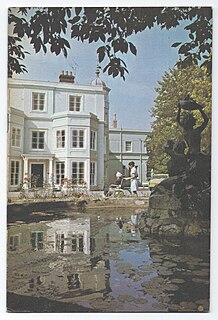
The Old Manor Hospital was a psychiatric hospital in Salisbury, Wiltshire, England. It was established in the early 19th century as a private licensed house called Fisherton House or Fisherton House Asylum, which became the largest private madhouse in the United Kingdom. In 1924, following a change of proprietors, it was renamed Old Manor Hospital and in 1955 it was amalgamated into the National Health Service. From 1813 to 1955 it was owned and managed by members of the same family. The Old Manor Hospital closed in 2003 and was replaced by Fountain Way, a smaller, modern, psychiatric hospital on part of the same site. In 2014 the site was acquired by Quantum Group for development as a residential estate and the conversion of the main building to a hotel.

William Montgomerie (1797–1856) was a Scottish military doctor with the East India Company, and later head of the medical department at Singapore. He is best known for promoting the use of gutta-percha in Europe. This material was an important natural rubber that made submarine telegraph cables possible. Montgomerie was involved in spice cultivation as head of the Singapore botanical experimental gardens and at his personal estate in Singapore. The latter never became economically viable, but he received a Society of Arts gold medal for nutmeg cultivation. He was also responsible for building the first lunatic asylum in Singapore. Montgomerie died at Barrackpore in India a few years after taking part in the Second Anglo-Burmese War as Superintendent Surgeon.
References
- ↑ (Lee 1978, p. 194)
- ↑ (Lee 1978, p. 194)
- ↑ (Lee 1978, p. 194)
- ↑ (Lee 1978, p. 194)
- ↑ (Lee 1978, p. 194)
- ↑ (Lee 1978, p. 194)
- ↑ (Ng 2001a, p. 7)
- ↑ (Ng 2001a, p. 7)
- ↑ (Institute of Mental Health 2003, p. 15)
- ↑ (Ng 2001a, p.7; Institute of Mental Health 2003, p. 15)
- ↑ (Institute of Mental Health 2003, p. 16)
- ↑ (Ng 2001a, p. 7)
- ↑ (Ng 2001a, p. 8)
- ↑ (Ng 2001a, p. 8)
- ↑ (Ng 2001a, p. 8)
- ↑ (Lee 1978, p. 194)
- ↑ (Lee 1978, p. 194)
- ↑ (Lee 1978, p. 194)
- ↑ (Lee 1978, p. 194)
- ↑ (Lee 1978, p. 194; Ng 2001a, p. xix)
- ↑ (Ng 2001a, p. 8)
- ↑ (Ng 2001a, p. 8)
- ↑ (Ng 2001a, p. 8)
- ↑ (Lee 1978, p. 194)
- ↑ (Lee 1978, p. 194)
- ↑ (Lee 1978, p. 194)
- ↑ (Ng 2001a, p. 8; Lee 1978, p. 195)
- ↑ (Lee 1978, p. 195)
- ↑ (Lee 1978, p. 195; Ng 2001a, p. 8)
- ↑ (Ng 2001a, p. 8; Institute of Mental Health 2003, p. 16; Lee 1978, p. 195)
- ↑ (Ng 2001a, p. 8; Lee 1978, p. 195)
- ↑ (Lee 1978, p. 195)
- ↑ (Lee 1978, p. 195)
- ↑ (Lee 1978, p. 195)
- ↑ (Lee 1978, p. 195)
- ↑ (Lee 1978, p. 195)
- ↑ (Lee 1978, p. 195, Ng 2001a, p. 9)
- ↑ (Lee 1978, p. 196)
- ↑ (Lee 1978, p. 196)
- ↑ (Lee 1978, p. 196)
- ↑ (Ng 2001a, p. 9)
- ↑ (Ng 2001a, p. 9)
- ↑ (Ng 2001a, p. 9; Institute of Mental Health 2003, p. 16))
- ↑ (Ng 2001a, p. 9; Institute of Mental Health 2003, p. 16)
- ↑ (Ng 2001a, p. 9; Institute of Mental H 2003, p. 16)
- ↑ (Ng 2001a, p. 9; Institute of Mental Health 2003, p. 16)
- ↑ (Ng 2001a, p. 9)
- ↑ (Ng 2001a, p. 9)
- ↑ (Lee 1978, p. 196)
- ↑ (Ng 2001, p. 9; Lee 1978, p. 196)
- ↑ (Lee 1978, p. 195)
- ↑ (Lee 1978, p. 196)
- ↑ (Lee 1978, p. 196)
- ↑ (Ng 2001a, p. 9; Institute of Mental Health 2003, p. 16)
- ↑ (Lee 1978, p. 196)
- ↑ (Lee 1978, p. 197)
- ↑ (Ng 2001a, p. 9; Institute of Mental Health 2003, p. 16; Lee 1978, p. 197)
- ↑ (Lee 1978, p. 197)
- ↑ Lee 1978, p. 197
- ↑ Ng 2001a, p. 9; Lee 1978, p. 197
- ↑ Institute of Mental Health 2003, p. 16
- ↑ Lee 1978, p. 197)
- ↑ Institute of Mental Health 2003, p. 16)
- ↑ Lee 1978, p. 198
- ↑ Lee 1978, p. 198
- ↑ Lee 1978, p. 197
- ↑ Lee 1978, p. 197
- ↑ Ng 2001a, p. 9
- ↑ Ng 2001a, p. 11
Institute of Mental Health/Woodbridge Hospital (Singapore). (2003). Loving Hearts, Beautiful Minds: Woodbridge Hospital Celebrating 75 years. Singapore: Armour Publishing Pte Ltd. ISBN 981-4138-07-X.
Lee, Edwin. (March 1990). Historic Buildings of Singapore. Singapore: Preservation of Monuments Board. ISBN 9971-88-224-8.
Lee, Yong Kiat. (December 1978). "The Lunatic Asylum in Early Singapore (1819–1869)". The Medical History of early Singapore, Chapter 5. Singapore: Southeast Asian Medical Information Centre (SEAMIC), a special project of the International Medical Foundation of Japan (IMFJ) started in April 1977.
Ng, Beng Yeong (2001a). Till the Break of Day: A History of Mental Health Services in Singapore, 1841–1993. Singapore: Singapore University Press. ISBN 9971-69-245-7.
Ng, Beng Yeong (2001b). “History of Psychiatry in Singapore”. Psychiatry for Doctors, edited by Kua Ee Hock, Ko Soo Meng and Lionel Lim Chee Chong, Section 1, Chapter 2. Singapore: Armour Publishing Pte Ltd.
Samuel, Dhoraisingam S. December 1991. Singapore’s Heritage: Through Place s of Historical Interest. Singapore: Elixir Consultancy Service. ISBN 981-00-3185-8.